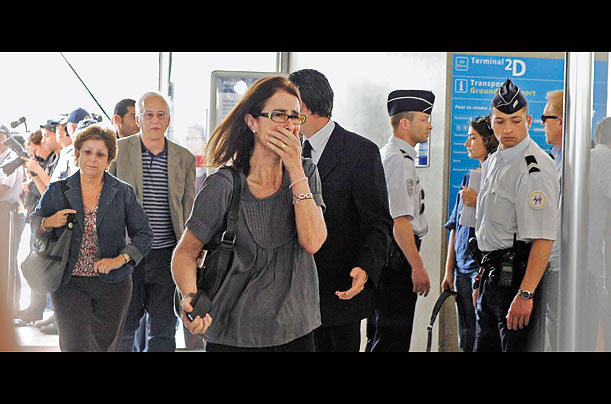
It's always unsettling when you know — yet don't really know — that something awful has happened, which may be why the loss of Air France Flight 447 over the Atlantic, on its way from Rio de Janeiro to Paris, seems so poignant. In their heads, those waiting for their loved ones at Charles de Gaulle Airport, their hands covering their faces in the universal reflex of grief, must have known there was no hope. In their hearts, they could be forgiven for holding on to the slim prospect of good news. And then, two days later, far out at sea, the debris of the Airbus A330 was found.
That debris — a slick of oil, pieces of metal and plastic — had the quality of weight in a world that is becoming weightless. We have become so used to data whizzing at the speed of light from one continent to another, bits of information reforming themselves into text, images and video, that we are in danger of forgetting the technology that truly released us from the tyranny of distance, and how recently. The first airplane flew on the sand dunes of North Carolina only 106 years ago. As an option for regular folk, intercontinental air travel is less than 40 years old (the Boeing 747 entered service in 1970). Yet in no time at all we have come to regard it as a natural part of the order of things. Flight 447's route is some 5,700 miles (9,200 km) long — within easy memory, an impossible distance for any scheduled flight to have managed. Today, when you can fly in one hop from Singapore to Newark, N.J. — more than 9,500 miles (15,000 km) — Rio to Paris hardly seems impressive.
Still, hold that insouciance. Aviation has changed us: it has shrunk the planet, altered our sense of the possible, made the strange familiar. Tragedies can often highlight the significance of that which we have come to consider commonplace. Which makes it a good time not just to mourn those who died this week but to remember all who, for a century, have built and flown the great birds that make our world one.